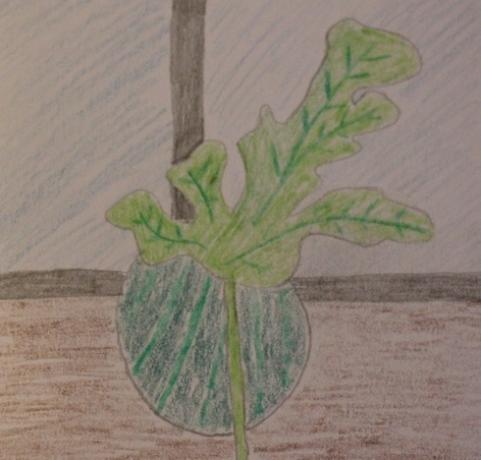Grow watermelons in your own garden
A little luck, skill and a hot summer are all it takes to grow watermelons in your own garden. Try your luck.
Since melons love it hot and sunny, the right time to grow watermelons is not until April. First of all, it is necessary to give preference to the plants. This is best done indoors using a small indoor greenhouse on a sunny window sill. The small melons can go outdoors after the ice saints in mid-May.
The right seeds for your watermelons
There are some melon varieties that also grow in German latitudes. Among the watermelons, the Sugar Belle and Sweet Siberian varieties form the most popular group. But also sweet melons, such as Charentais and Cantaloup or honeydew melons of the Petit Gris de Rennes variety, can thrive in your garden.
Watermelons are a bit more robust than sugar melons and honeydew melons. Therefore, they can also tolerate a location that is not in the blazing sun all day. The sensitive sugar melons and honeydew melons, on the other hand, must be protected from the wind, for example by a wall.
You can get the right seeds from specialist dealers. If you dry the kernels of your favorite melon variety, you can use them as seeds too. Just be careful not to get any moisture on the seeds. This is because these mold easily.
So prefer watermelons
-
Let the peat pellets swell. Place peat pellets in a seed tray. Pour lukewarm water up to the brim and allow the tablets to swell completely.

© Frauke Itzerott -
Pour off the water. After the peat pellets have reached their final size, the excess water is poured off again.

© Frauke Itzerott -
Plant the seed. Put one seed in each swollen peat tablet and cover it well with some substrate.

© Frauke Itzerott -
The right place to grow. Now put the seed tray in the greenhouse and close it. The right place for your cultivation is in a warm and bright place around 24 degrees Celsius on the windowsill. Avoid direct sunlight. This would harm the young melon plants.

© Frauke Itzerott -
First germination. When the first cotyledons can be seen, remove the cover of the greenhouse. Make sure to keep the soil moist at all times.

© Frauke Itzerott -
Plant outside. As soon as no more frost is to be expected, plant the melon family in a sheltered and sunny place in the garden. Ideal for this is the proximity of a protective house wall or a warming greenhouse.

© Frauke Itzerott
If you can enjoy the advantage of being able to use a bed in the garden or green area, ...
Growing and caring for watermelons
Before you can plant your watermelons out, you should prepare the soil. Fertilize this with compost or manure. However, this must already be ripe.
You should also rake the soil thoroughly once so that it is nice and loose. Watermelons grow best in acidic soils.
Place the plants outdoors at a distance of one meter. A garden fleece initially warms the young plants. Later, a ventilated cold frame or a foil tunnel protects the melon plants until they bloom.
Since watermelons have a poorly developed root system, they need plenty of water. When growing, make sure that you water them regularly, but without waterlogging.
You can prevent the still tender melon stems from kinking with climbing aids. Sticks and trellises are well suited to support the individual tendrils a little.
A melon fruit only grows later where a blossom occurs. The melon plant only flowers on the branches of its stems. In order to branch out, pinch the young plant when the third pair of leaves appears. Here you snap off the top pair of leaves and thus stimulate branching.
A melon plant is dioecious and has a male and a female flower. In order for the pollen to pass from the male to the female flower, the melon flower has to go from insects be pollinated. Only a fertilized flower forms fruits.
It is therefore important that you remove the poly tunnel or cold frame as soon as the first flowers can be seen. This is how the insects reach the flowers and can take over fertilization. They do this by flying from flower to flower, passing on the pollen that clings to their legs.
How to harvest your watermelons at the right time
Watermelons are ripe for harvest about five months after sowing. So the right time for harvest is between August and October. Easily recognizable signs of a ripe melon with sweet flesh are withered leaves. When you knock on the melon, you should hear the lowest possible tone.
Cut the fruit off the melon stem with a sharp knife. Leave the fruit set on your melon so that it can be stored longer.
The safest way to harvest your melon is in a heated one Glasshouse. But a sunny, sheltered place in the garden is also promising. In any case, the effort is worth it. With a bit of luck and a dry, hot summer, one melon per plant can be expected.


